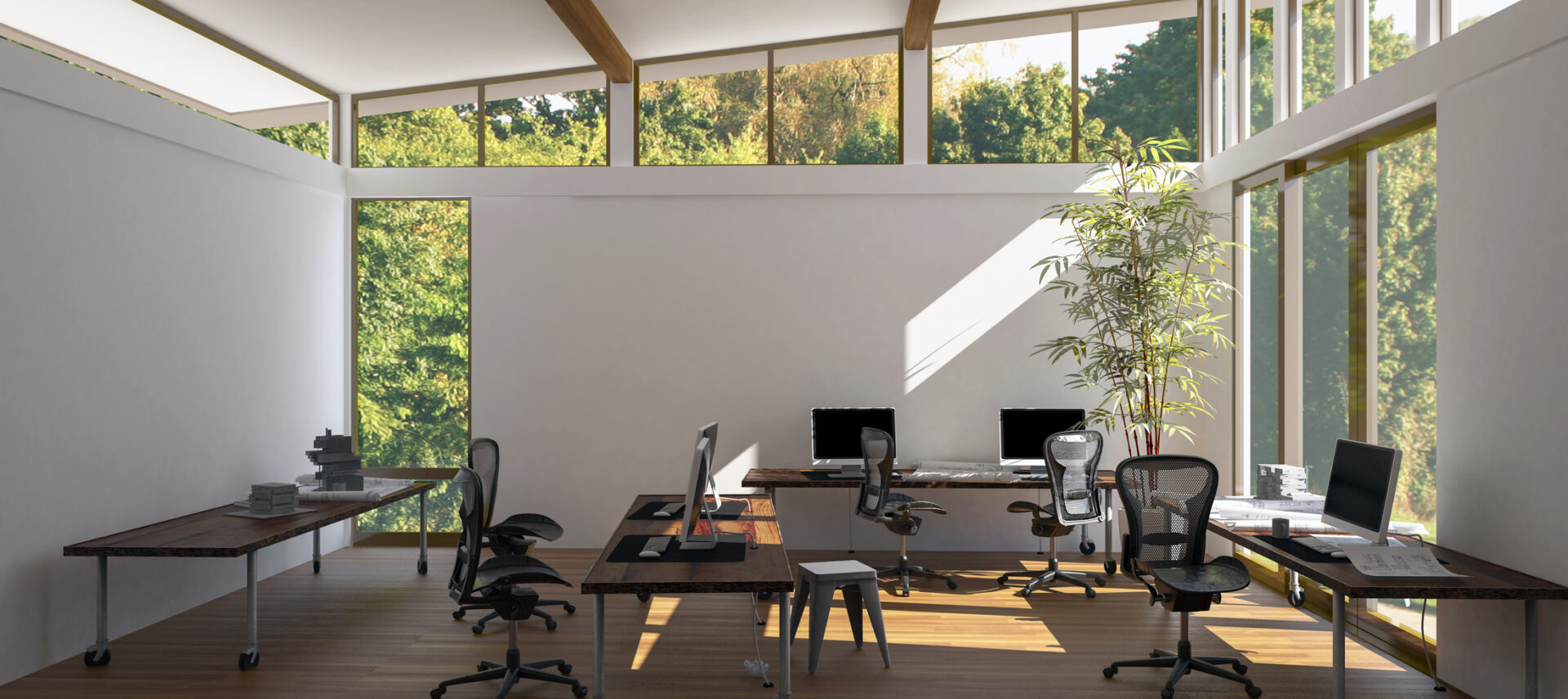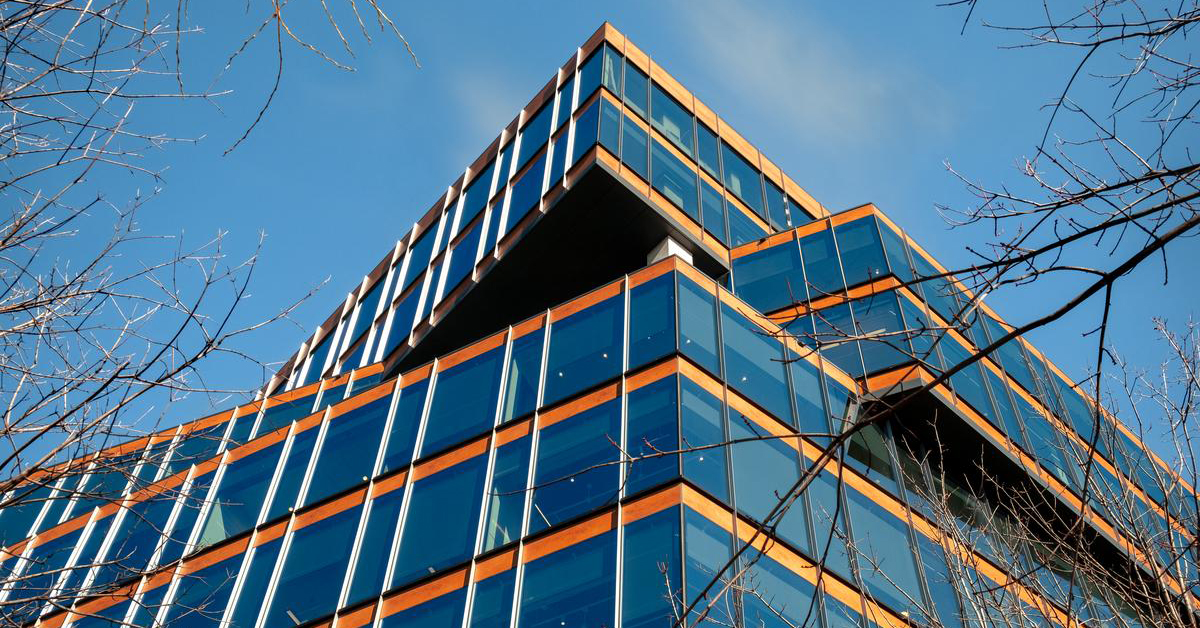News & Insights
The impact of building envelope commissioning on indoor environmental quality
Discover how building envelope commissioning (BECx) plays a critical role in optimizing indoor environments leading to healthier interior spaces and occupant well-being in addition to saving energy.

Building envelope commissioning (BECx) and indoor environmental quality (IEQ) are closely connected concepts in building design, particularly in the context of energy efficiency, occupant health, and overall building performance.
What is building envelope commissioning?
BECx is a quality-assurance process focused on the performance of a building’s “envelope”—the physical barrier between the interior and exterior. This includes walls, roofs, windows, doors, and foundation elements. BECx ensures that the envelope is designed, constructed, and tested according to the project’s specifications to minimize air, moisture, and thermal leakage. The commissioning process typically involves:
- Design Review – Ensuring the building’s design meets performance criteria (energy efficiency, durability, etc.).
- Construction Observation – Verifying that materials and construction practices are of high quality.
- Testing and Verification – Performing tests, such as air leakage and thermography, to ensure performance goals are achieved.
- Operational Monitoring – Long-term performance assessment to track how the enclosure behaves over time.
Typically, owners invest in the building envelope’s performance because it directly affects the building’s energy efficiency (by preventing unwanted heat transfer and air leaks) and prevents degradation of the structure. However, BECx can also impact indoor comfort levels and health.
What exactly is indoor environmental quality (and why does it matter)?
IEQ refers to the conditions inside a building that impact the health, comfort, and well-being of occupants. It includes multiple factors such as:
- Air Quality – Control of pollutants, adequate ventilation, and humidity management.
- Thermal Comfort – Proper indoor temperature and humidity control.
- Acoustic Comfort – Minimizing noise from both external and internal sources.
- Lighting – Balancing natural and artificial lighting for optimal visibility and mood.
- Occupant Health and Productivity – Poor IEQ can increase the risk of “sick building syndrome”, a condition where building occupants experience acute health and comfort effects that appear to be linked to time spent in a building, resulting in lower cognitive function, excess sick time and lower productivity.
How does BECx impact IEQ?
Building envelope commissioning plays a significant role in improving indoor environmental quality, particularly by enhancing two key areas: air quality and thermal comfort.
A well-sealed building envelope significantly reduces the infiltration of outdoor pollutants such as dust, pollen, and smog, all of which can negatively affect indoor air quality. Additionally, by controlling moisture intrusion, BECx helps to prevent mold growth—a common contributor to poor air quality in buildings. Mold can release spores and other allergens that diminish air quality and potentially harm occupant health.
Proper insulation and the reduction of air leakage through BECx protect consistent indoor temperatures. This prevents uncomfortable drafts, excessive humidity, and temperature fluctuations—all factors that impact occupant comfort and health. A stable indoor climate, free from these variations, contributes directly to a healthier and more comfortable environment.
But how exactly does BECx achieve these outcomes? Here’s a closer look at the key codes and standards that govern BECx and its impact on IEQ in commercial buildings, as well as the specific areas it addresses:
Moisture control
Preventing moisture intrusion is a key function of BECx, as moisture can lead to mold, which in turn contributes to poor indoor air quality (IAQ). By ensuring the building enclosure is well sealed, BECx helps maintain a dry, healthy indoor environment.
Standard reference: ASHRAE Standard 160-2016: Criteria for Moisture-Control Design Analysis in Buildings
Air infiltration
Uncontrolled air infiltration allows pollutants, allergens, and excess humidity into the building, which degrades IEQ. BECx minimizes these issues by identifying and sealing gaps and cracks in the building envelope.
Standard references: ASHRAE Standard 136-2016: A Method of Determining Building Air Leakage Rate and 2021 IECC (International Energy Conservation Code) Section C402.5.1: Air Leakage
Thermal comfort
Proper insulation, verified through BECx, ensures stable indoor temperatures, avoiding the discomfort caused by drafts or hot/cold spots. This is vital for maintaining thermal comfort, a core component of IEQ.
Standard reference: ASHRAE Standard 55-2020: Thermal Environmental Conditions for Human Occupancy
Noise reduction
A well-commissioned building envelope also helps to mitigate external noise, creating a quieter and more comfortable indoor environment—especially important in commercial spaces where noise can disrupt productivity.
Standard reference: ANSI/ASA S12.60-2010: Acoustical Performance Criteria for Schools (adaptable to commercial buildings)
Prevention of pest intrusion
Gaps in the building enclosure not only let in air and moisture but can also become entry points for pests. BECx helps prevent this by ensuring all cracks and openings are sealed, which keeps out pests that could otherwise contribute to indoor pollutants and allergens.
Guidance: Integrated Pest Management (IPM) Principles for Buildings and Structures
Energy efficiency
By reducing air leakage and minimizing heat transfer, BECx boosts a building’s energy efficiency. This, in turn, reduces strain on HVAC systems, helping to maintain ideal indoor temperature and humidity levels while improving overall IEQ.
Standard references: IECC 2021: Commercial Provisions, Section C402.5 and ASHRAE Standard 90.1-2019: Energy Standard for Buildings Except Low-Rise Residential Buildings
Compliance with IEQ standards
Finally, BECx ensures that the building complies with key standards related to indoor air quality and thermal comfort, including ASHRAE Standards 62.1 and 55. These standards set the benchmarks for ventilation and thermal conditions, both essential to achieving acceptable IEQ in commercial buildings.
Standard references: ASHRAE Standard 62.1-2019: Ventilation for Acceptable Indoor Air Quality and ASHRAE Standard 55-2020: Thermal Environmental Conditions for Human Occupancy
A building with high IEQ means better air, comfortable temperatures, and fewer health-related issues. It reduces the risk of allergies, asthma, and other respiratory problems, while also improving overall well-being and productivity.
In short, BECx is a proactive strategy to ensure that a building’s enclosure supports both occupant health and environmental sustainability by creating a tighter, more efficient structure. It’s a growing essential in both the design and operation phases of modern buildings.
For media inquiries on this article, reach out to Stacy Lake, Director of Corporate Communications

Stephen Shanks, CxA, BECxP, NDT Level III
Stephen Shanks is a building scientist and commissioning provider with over 40 years of experience. He possesses a unique blend of expertise in physics and building construction. His knowledge and experience allow him to effectively bridge theory and practice. Stephen is a subject matter expert for Building Enclosure Commissioning (BECx), Air Barriers, Whole Building Airtightness Testing (WBAT), and Thermal-Infrared (IR) Examinations. He is actively engaged in various industry standard and code development committees, including ASHRAE Technical Committees 4.4 Building Envelope Performance and 7.9 Building Commissioning, and ASTM Committee E06 Performance of Buildings. Stephen serves as a Vice President at Salas O’Brien. Contact him at [email protected]

Steve Carroll, MBA, CxA, LEED AP
Steve Carroll is a Principal and the Director of Commissioning at Salas O’Brien. As a Commissioning Authority, Steve identifies potential issues before they become problems and increases value for his clients. He also specializes in cybersecurity for building systems, providing systems monitoring to keep alternate attack vectors secure. As a leader, Steve is focused on mentoring, coaching, and developing his team to achieve continuous improvement. He holds a Master of Business Administration and a Bachelor of Science in Engineering. Contact him at [email protected].

Keith A. Simon, FAIA, BECxP, CxA+BE, CPHC, LEED AP, CEI
An expert in building enclosure technology, Keith Simon addresses the critical and often unmet need for ensuring and improving building performance, resilience, and durability by guiding design teams, educating future architects, and facilitating interdisciplinary exchange. Keith serves as Vice President of Design Phase Services for Salas O’Brien. Contact him at [email protected].


